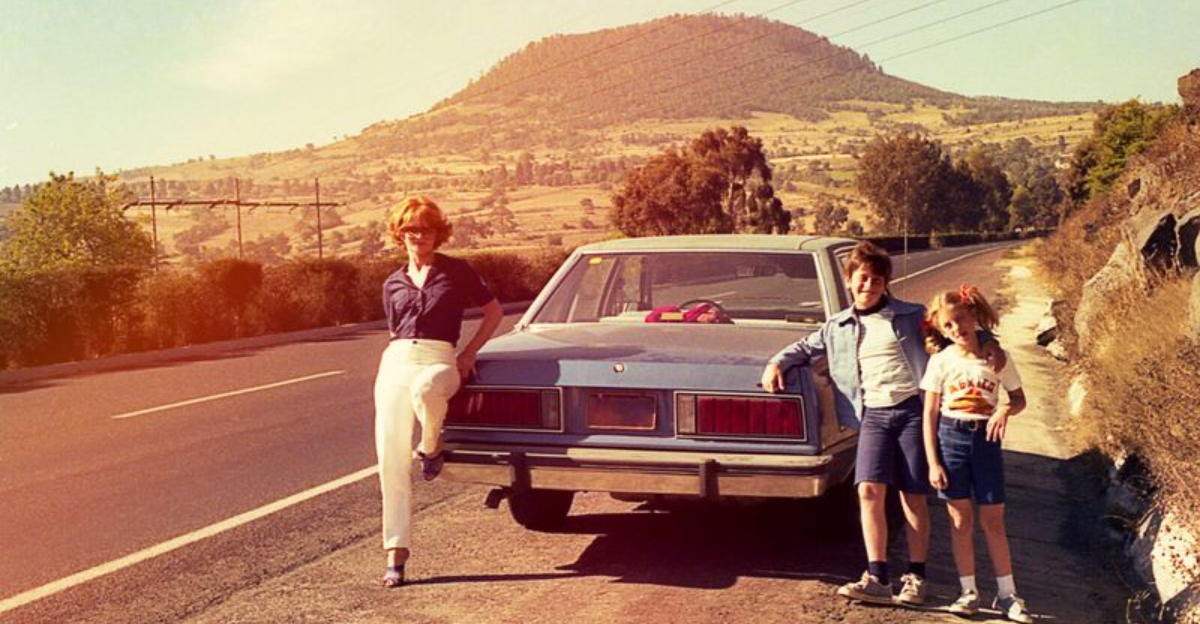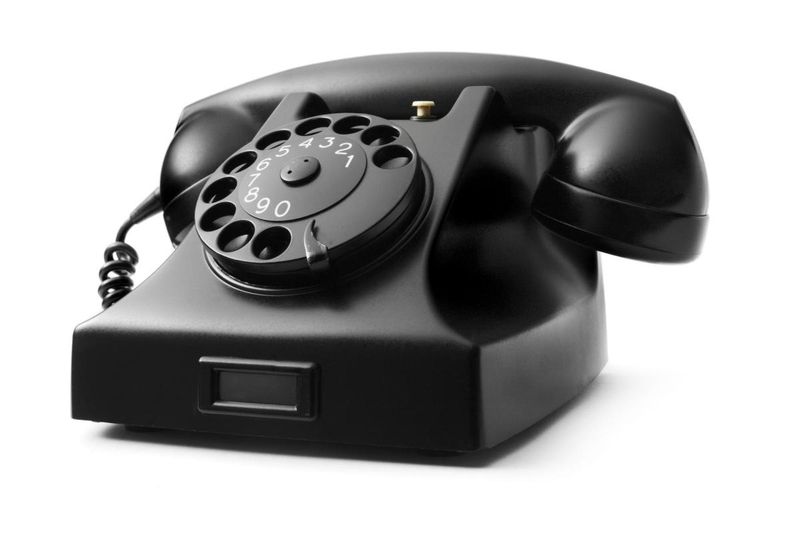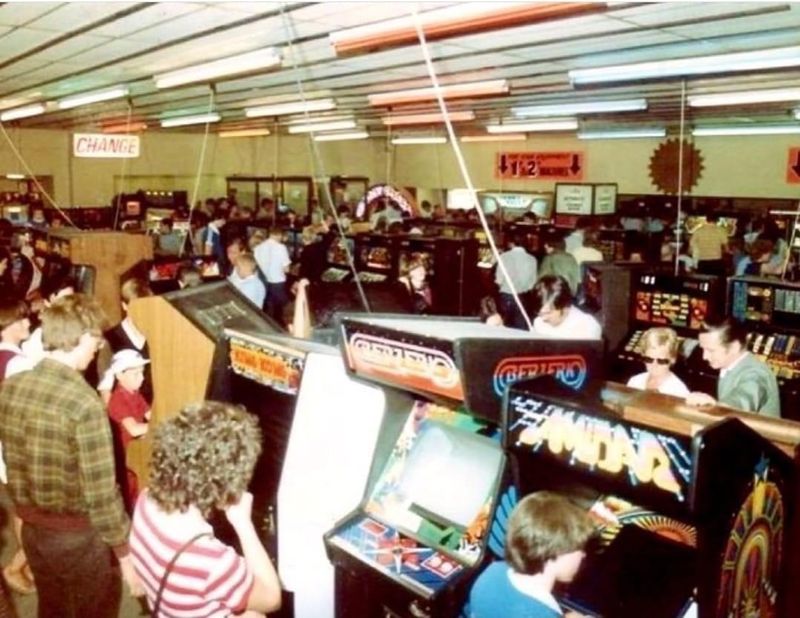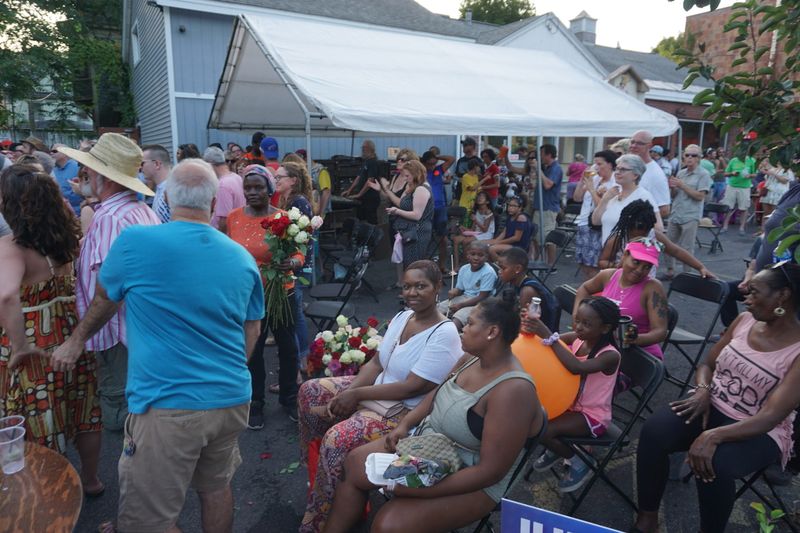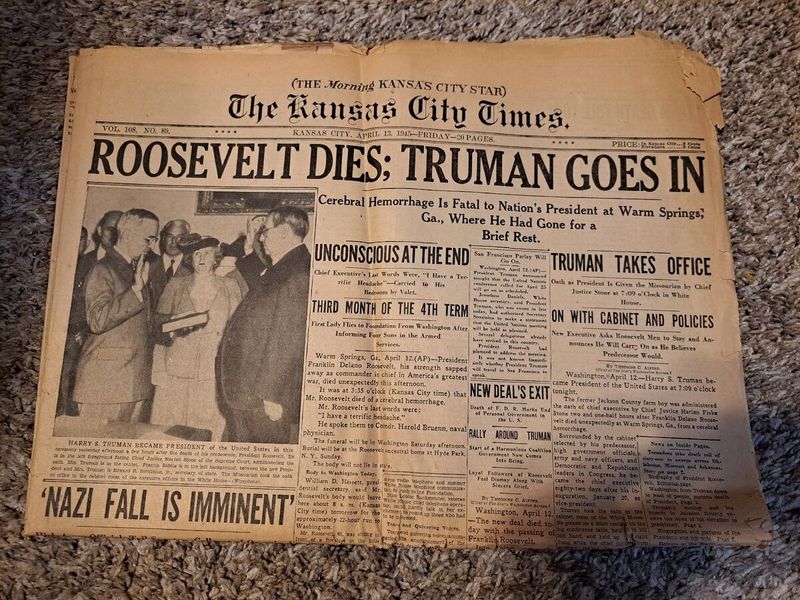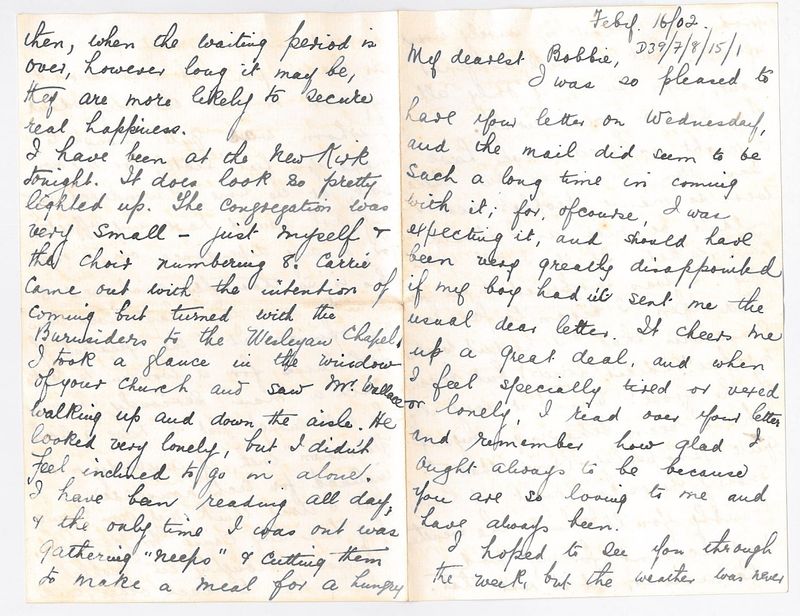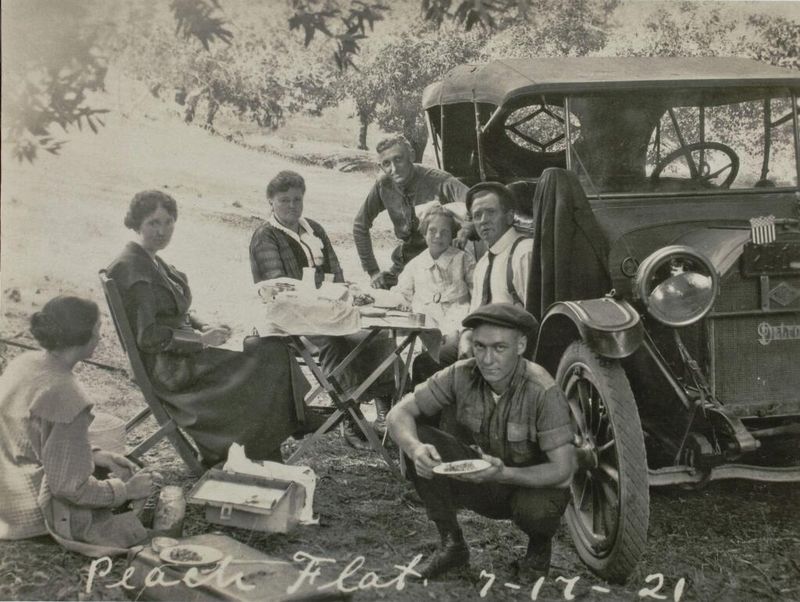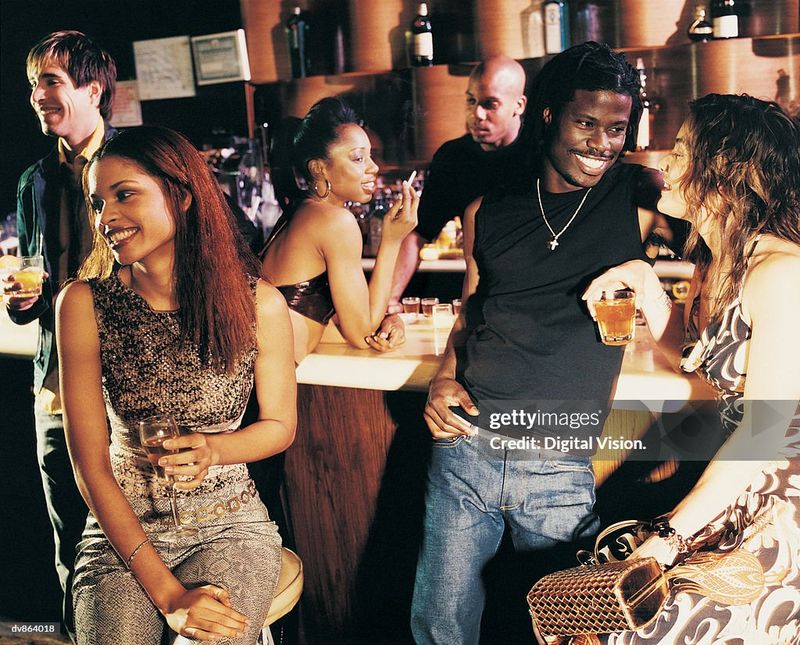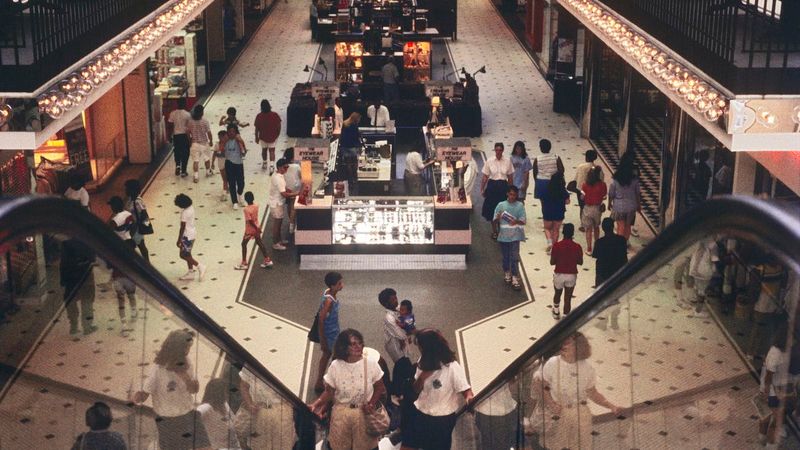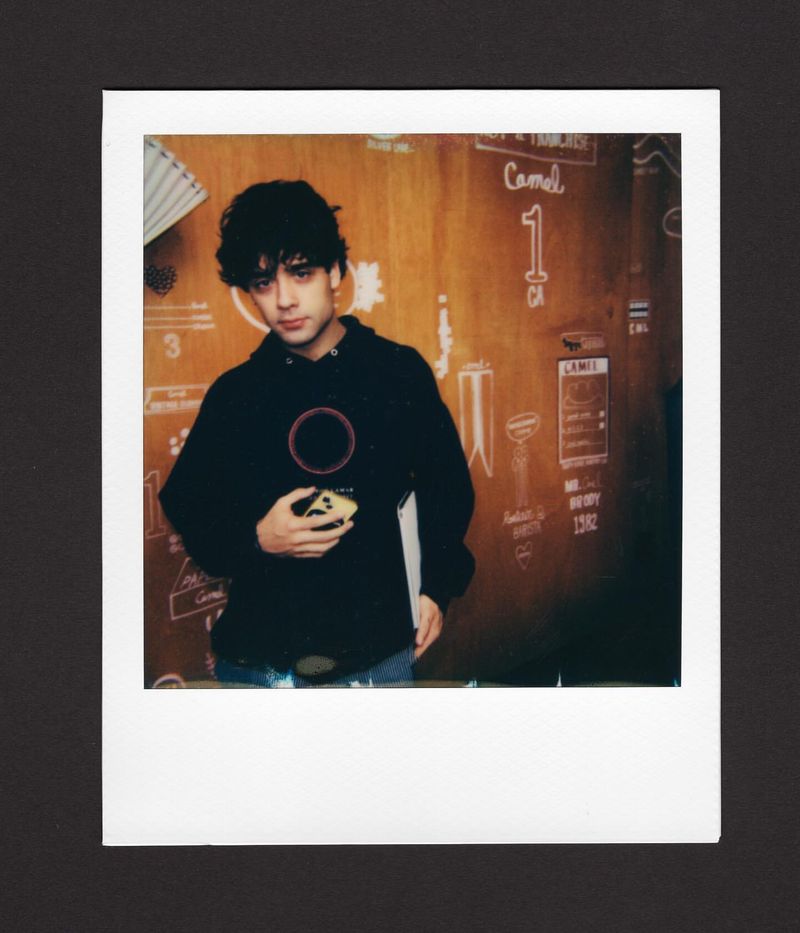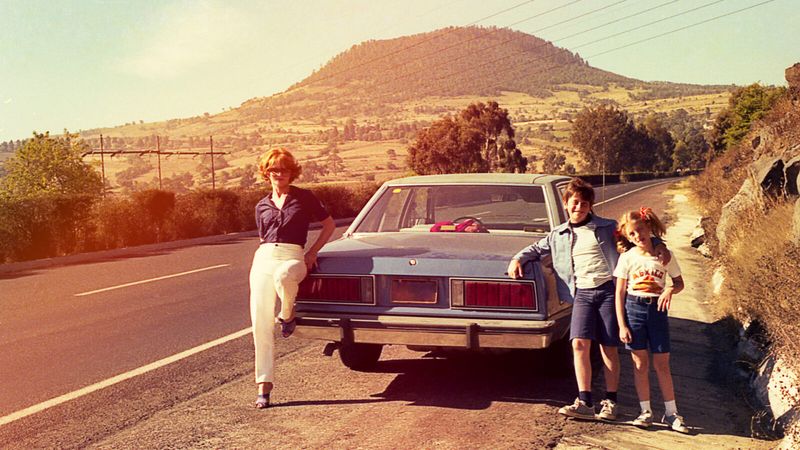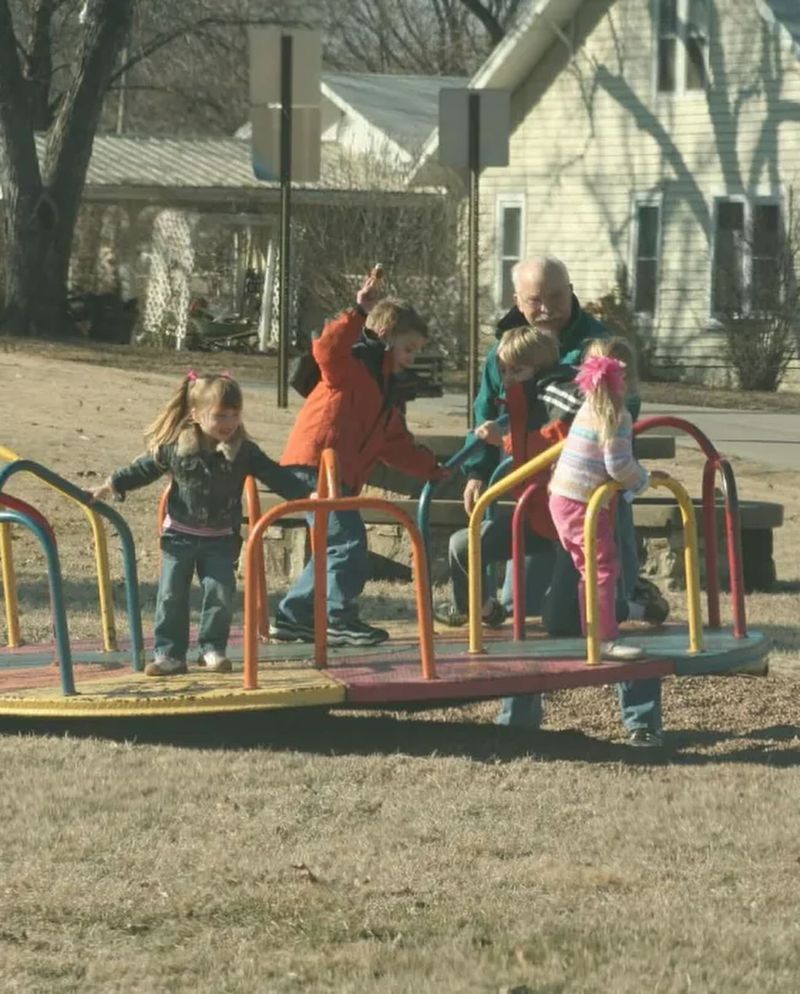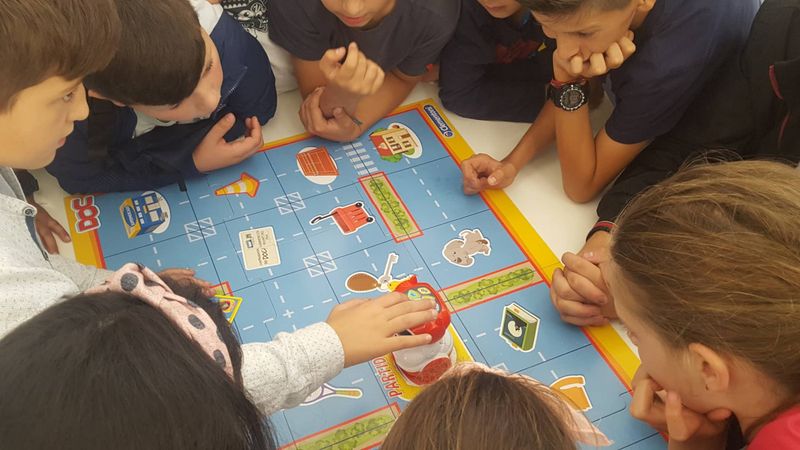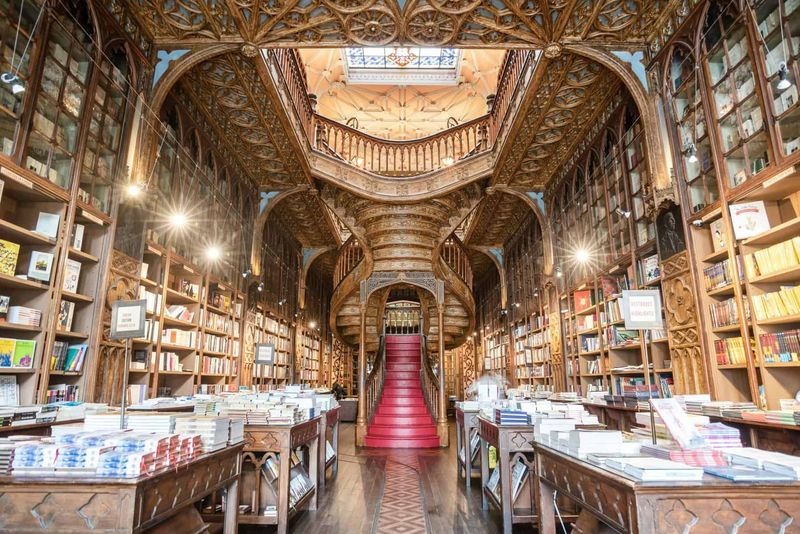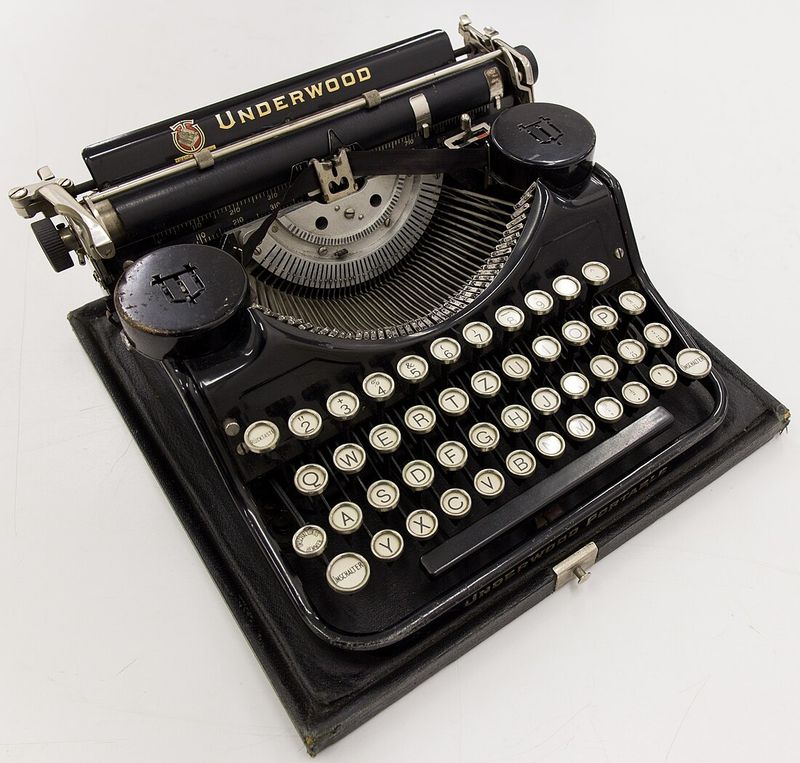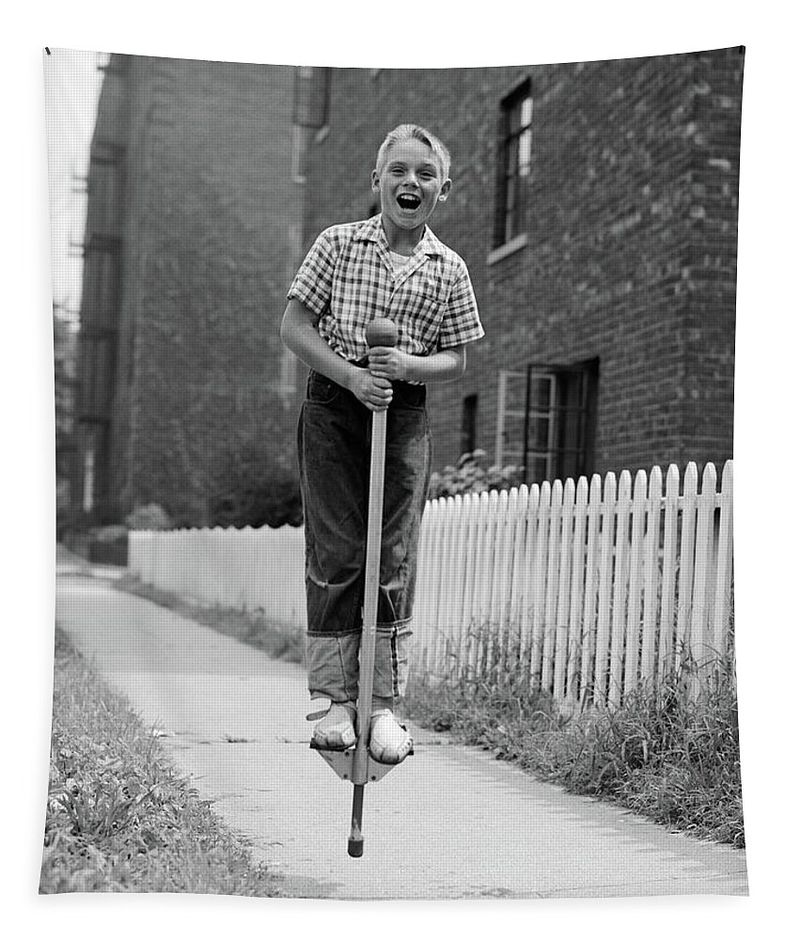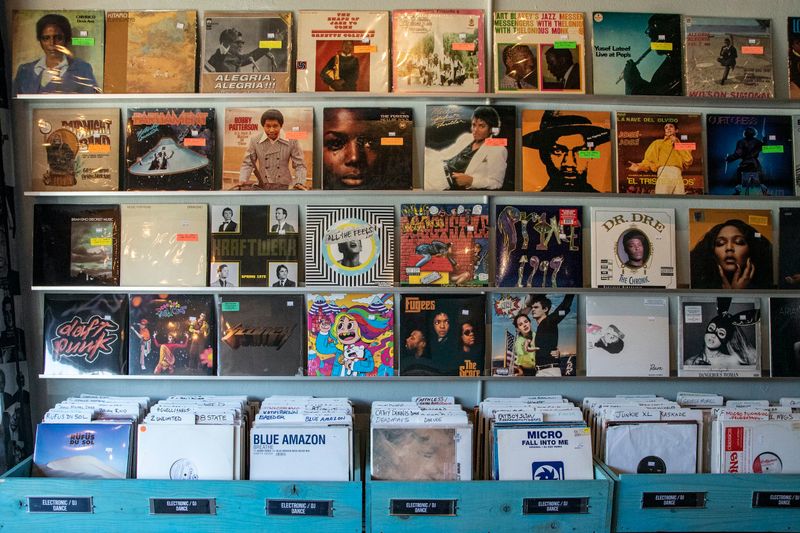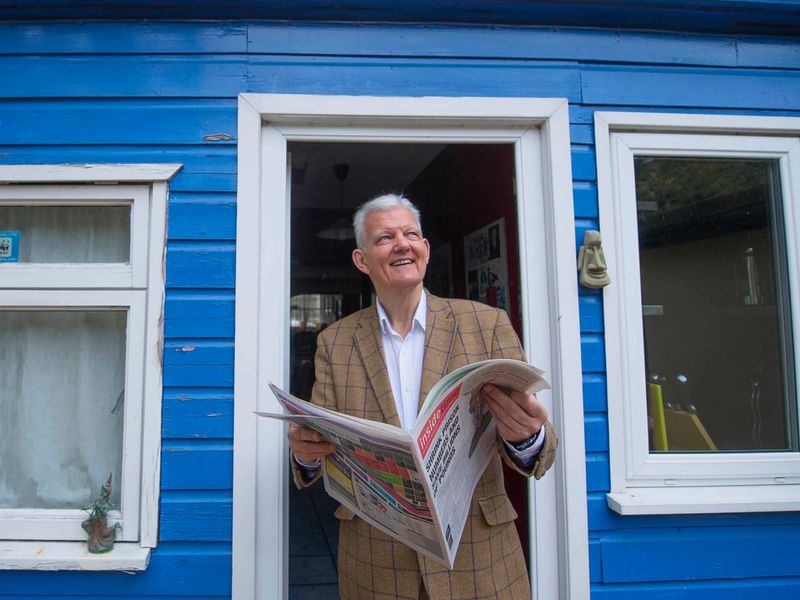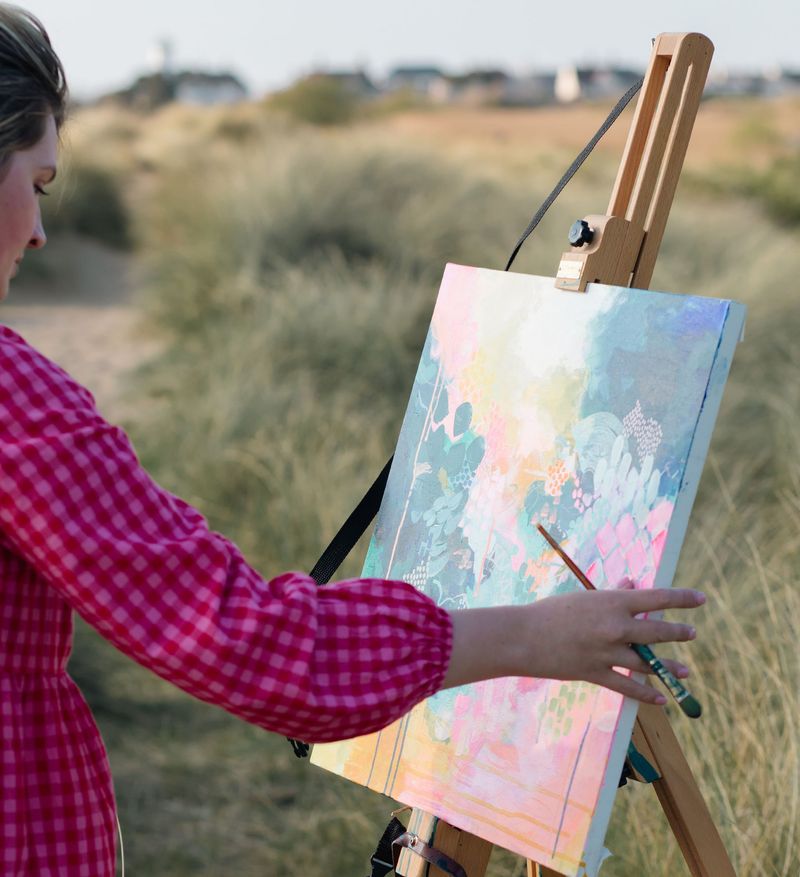Explore a nostalgic journey through 30 photos capturing the essence of the 20th century, showcasing the charm and simplicity that many believe surpasses today’s fast-paced digital age.
1. When Summer Blockbusters Ruled the Box Office
Remember the summer excitement that buzzed through the air as the latest blockbuster hit the cinemas? People would line up for hours, popcorn in hand, ready to be swept away by epic stories and stunning visuals.
The magic of film brought communities together in a shared experience, unlike today’s individual streaming sessions.
Movies were an event, a social experience that we couldn’t wait to discuss the next day. The thrill of waiting for the next Spielberg masterpiece or the latest sci-fi adventure was unparalleled. In a world without spoilers at every click, the surprise was genuine.
2. When Fashion Was Bold and Fearless
Fashion in the 20th century was a statement of individuality and rebellion. From the psychedelic prints of the 60s to the power suits of the 80s, each decade brought its own unique flair.
People weren’t afraid to stand out, embracing bold and fearless designs that defined the era. It was a time when trends weren’t dictated by influencers but by a collective cultural movement.
The fashion statements weren’t just clothes; they were a reflection of societal changes and personal expression. Vintage shops today echo the vibrant energy of those daring times.
3. When Rock ’n’ Roll Changed Everything
The birth of rock ’n’ roll in the 1950s revolutionized music, bringing a new sound that inspired generations. Legends like Elvis Presley and Chuck Berry broke boundaries, creating a cultural phenomenon that resonated with young and old alike.
The electrifying beats and rebellious lyrics became a symbol of freedom, challenging the status quo. Rock ’n’ roll concerts were more than just performances; they were experiences that ignited a sense of unity and excitement.
The spirit of rock echoed in fashion, lifestyle, and the very fabric of society, leaving an indelible mark on history.
4. When Cars Were Flashy, Not Automated
The automobile industry thrived in the 20th century with cars that were more than just machines; they were symbols of freedom and style. Flamboyant designs with chrome details and vibrant colors captured the imagination of many.
Unlike today’s automated vehicles, these cars required skill and passion to drive. Whether it was the roar of a V8 engine or the sleek curves of a convertible, cars were a personal statement.
Car shows were social events, where enthusiasts gathered to admire the craftsmanship and dream of open-road adventures.
5. When Tech Was Simple and Life Felt Easier
Technology in the 20th century was understated yet revolutionary. Gadgets like rotary phones and vinyl players were simple but effective, fostering a sense of connection without overwhelming distractions.
Life felt more relaxed and personal before the digital age’s constant notifications and updates. Families gathered around a single TV, enjoying shows together and creating shared memories.
The simplicity of technology allowed people to focus on real-world interactions, making life feel just a bit easier and more authentic, a contrast to today’s digital complexities.
6. When Family Gatherings Were Always Face-to-Face
Family gatherings in the 20th century were cherished moments of connection and joy. Without the distractions of modern technology, people gathered face-to-face, sharing stories and laughter over homemade meals.
These reunions were about creating memories through genuine interactions, where everyone was present in the moment. The warmth of a hug, the sound of shared laughter, and the joy of being together were unmatched.
As digital devices dominate today’s social interactions, the authenticity of these gatherings is fondly remembered, highlighting the value of being truly present.
7. When a Phone Call Actually Mattered
In the days before texting and social media, a phone call was a meaningful connection. Picking up the phone meant hearing a loved one’s voice, sharing news, and genuinely engaging in conversation.
Calls were anticipated and cherished, often the highlight of someone’s day. The thrill of a ringing phone brought excitement and the promise of news or a friendly chat.
Unlike today’s quick and impersonal messages, phone calls were personal, requiring time and attention, and were a testament to the relationships they nurtured.
8. When Music Videos Were a Cultural Event
Music videos in the 1980s and 90s were more than just entertainment; they were cultural events. Premieres on channels like MTV were eagerly awaited, bringing families and friends together to watch the latest hits.
These videos transformed how we experienced music, adding a visual dimension that elevated the songs. Artists like Michael Jackson and Madonna created iconic videos that defined an era, setting trends and sparking conversations.
The anticipation and excitement of a premiere made music videos a shared experience, unlike today’s on-demand viewing.
9. When Arcades Were the Ultimate Hangout Spot
Arcades in the 1980s were vibrant hubs of excitement and camaraderie. Packed with neon lights and the sounds of retro gaming machines, they were the go-to hangout spot for teenagers.
Friends gathered to challenge each other in classic games like Pac-Man and Space Invaders, fostering friendly competition and social interaction. The experience was immersive and engaging, offering a sense of community and shared enthusiasm.
Unlike today’s solitary gaming, arcades brought people together, creating connections and memories in a lively, energetic environment.
10. When Neighborhoods Felt Like Communities
In the 20th century, neighborhoods were vibrant communities where everyone knew each other. Streets echoed with the laughter of children playing, while adults chatted on porches, fostering a sense of belonging.
These tight-knit communities provided support and friendship, where neighbors looked out for one another. The sense of security and camaraderie was palpable, creating an environment where people felt truly at home.
As urbanization and technology reshape today’s neighborhoods, the community spirit of the past is longed for, reminding us of the value of genuine human connections.
11. When Print Magazines Set the Trends
Print magazines were the trendsetters of the 20th century, delivering the latest in fashion, culture, and news. People eagerly awaited each issue, flipping through glossy pages filled with inspiration and information.
These magazines were more than just reading material; they were cultural touchstones that shaped opinions and tastes. The tactile experience of holding a magazine and exploring its curated content was unmatched.
As digital media dominates today, the anticipation and excitement of print magazines are cherished memories of a time when trends were tangible and thoughtfully crafted.
12. When the Morning Paper Was the Daily Ritual
The morning paper was a cherished ritual in the 20th century, a source of information and connection to the world. Families gathered around the breakfast table, sipping coffee and discussing the latest headlines.
It was a time of reflection and engagement, where news was explored in depth rather than consumed in snippets. The tactile experience of folding pages and discovering stories made the news feel more personal and impactful.
Today’s digital headlines can’t replicate the intimacy and routine of reading a physical newspaper, a nostalgic memory of engagement and learning.
13. When Drive-In Theaters Made Movie Nights Magical
Drive-in theaters were a magical experience, combining the love of movies with the freedom of the open air. Families and friends gathered in their cars, snacks in hand, ready to enjoy a film under the stars.
The atmosphere was electric, filled with laughter and anticipation as the screen came alive. Drive-ins offered a unique blend of privacy and community, where the night sky added a touch of wonder to the cinematic experience.
As traditional theaters evolve, the nostalgia of drive-ins remains a cherished memory of creativity and connection.
14. When Handwritten Letters Showed True Emotion
Handwritten letters were the epitome of personal communication in the 20th century. Crafted with care and intention, they conveyed emotions and thoughts in a way digital messages cannot.
The time taken to write and receive a letter added depth to the words, making each one a treasured keepsake. Whether a love letter or a note from a friend, these letters were tokens of genuine connection.
In today’s world of instant messaging, the art and emotion of handwritten correspondence are fondly remembered, echoing a time of sincere communication.
15. When Campfires, Not Wi-Fi, Lit Up the Night
Camping in the 20th century was an escape to nature, where the glow of a campfire replaced the distractions of technology. Gathered under a canopy of stars, friends shared stories, laughter, and songs, creating memories without screens.
The crackling fire and the serenity of nature provided a sense of peace and connection. Without Wi-Fi, conversations flowed, and bonds strengthened in the warm embrace of the firelight.
This simple joy of gathering around a campfire remains a nostalgic reminder of the beauty of being present and connected with nature.
16. When TV Had Only a Few Channels (and We Loved It)
Television in the 20th century was a communal activity with only a few channels to choose from. Families gathered around, enjoying a shared viewing experience that sparked conversations and debates.
The limited options meant that shows were widely watched, creating cultural touchpoints that connected people. The anticipation of weekly episodes made TV viewing an event, unlike today’s on-demand binge-watching.
Those few channels offered quality content that brought people together, fostering a sense of community and shared interests, a nostalgic memory of simpler times.
17. When People Looked Up Instead of Down
In the 20th century, people walked with their heads up, engaging with the world around them. Conversations flowed naturally, and eye contact was part of daily life.
The absence of smartphones allowed for spontaneous interactions and a deeper connection to surroundings. People noticed the beauty of their environment, whether it was a blooming flower or a friendly face.
This era of engagement is remembered fondly, highlighting the importance of being present and aware in a world increasingly dominated by screens.
18. When the Mall Was the Place to Be
Malls were the social hubs of the 1980s, bustling with energy and excitement. Teenagers roamed the shops, hanging out with friends and exploring the latest trends.
The mall wasn’t just about shopping; it was a place to gather, socialize, and experience life. Food courts, arcades, and cinemas added to the allure, making malls the go-to destination for fun and connection.
The vibrancy and community spirit of malls are cherished memories, contrasted with today’s online shopping experience, where the social aspect is often lost.
19. When Polaroids Captured Moments in a Snap
Polaroid cameras brought a unique joy to photography in the 20th century, capturing moments instantly. Friends and family gathered to snap pictures, sharing smiles and laughter as the images developed before their eyes.
The immediacy and tangible nature of Polaroids made each photo a keepsake, cherished for its spontaneity and authenticity.
Unlike today’s digital photos, Polaroids offered a one-of-a-kind memory that couldn’t be edited or filtered, preserving the moment’s true essence. This instant magic is fondly remembered, as a testament to capturing life as it happens.
20. When Hanging Out Meant Real Connections, Not DMs
In the 20th century, hanging out meant genuine face-to-face connections without digital distractions. Friends met in cafes or homes, engaging in conversations that flowed naturally, filled with laughter and understanding.
The absence of smartphones allowed for deeper, more meaningful interactions, where the focus was on the people, not the screen.
These gatherings were about creating memories and bonds that lasted, unlike today’s digital messages that lack warmth and authenticity. The art of real conversation is a cherished memory, highlighting the beauty of genuine human connection.
21. When Road Trips Were Adventures Without GPS
Road trips in the 20th century were adventures fueled by curiosity and spontaneity. Without GPS, families relied on paper maps, discovering new places and creating stories along the way.
The journey was as exciting as the destination, filled with unexpected detours and breathtaking sights. Conversations and laughter filled the car, creating bonds and memories that lasted a lifetime.
This sense of exploration and freedom is a fond memory, reminding us of the joy of traveling without digital aids, where each turn was an adventure waiting to unfold.
22. When Kids Played Outside Until the Streetlights Came On
In the 20th century, the streets were alive with the laughter of children playing outside until the streetlights signaled it was time to go home. Bikes, jump ropes, and makeshift sports turned neighborhoods into playgrounds.
The freedom to explore and imagine fostered creativity and friendships, providing a sense of adventure and discovery.
This era of outdoor play is remembered fondly, highlighting the joy and benefits of being active and engaged in the world around us, a contrast to today’s screen-dominated leisure time.
23. When Board Games Brought Friends and Families Together
Board games were a staple of 20th-century entertainment, bringing friends and families together for hours of fun and bonding. Gathered around a table, people strategized, laughed, and celebrated victories.
These games fostered communication and teamwork, creating an engaging and interactive experience. The tactile nature of moving pieces and rolling dice added to the joy, offering a contrast to today’s digital gaming.
The memories of friendly competition and shared experiences are cherished, highlighting the timeless joy of traditional games that connect people on a personal level.
24. When Bookstores and Libraries Were the Hottest Hangouts
Bookstores and libraries were cultural and social hubs in the 20th century, offering a haven for book lovers and seekers of knowledge. Browsing shelves, discovering new stories, and engaging in literary discussions were cherished activities.
These spaces offered more than just books; they were places of inspiration and connection, where ideas flourished. The quiet, contemplative atmosphere provided a refuge from the hustle of daily life, encouraging reflection and creativity.
Today’s digital reading options can’t replicate the tactile and communal experience of exploring a bookstore or library, a nostalgic memory of literary joy.
25. When Typewriters Made Every Word Count
Typewriters were the writing tools of the 20th century, where every word typed held significance. The tactile experience of pressing keys and hearing the rhythmic click created a focused writing environment.
There was no delete button, so each sentence was carefully crafted, making writing a deliberate and thoughtful process. The permanence of typewritten words added weight to the message, unlike today’s easily edited digital text.
The nostalgia for typewriters reflects a time when words were chosen with care and intention, highlighting the art and discipline of writing.
26. When Pogo Sticks Made Sidewalks Thrilling
In the 1970s, pogo sticks turned ordinary sidewalks into thrilling playgrounds. Clad in bell-bottom jeans and bright t-shirts, kids hopped and bounced with infectious laughter echoing through the streets.
Unlike today’s digital distractions, the pogo stick offered simple joy and a sense of achievement with each jump. Neighbors stopped to cheer as kids mastered tricks, creating a sense of community and shared excitement.
It wasn’t just a toy; it was a rite of passage, teaching balance and coordination. The pogo stick craze, though short-lived, left lasting memories of carefree days spent outdoors.
27. When Vinyl Albums Ruled the Music Scene
Vinyl albums were the heart of the music scene in the 20th century, offering a rich and immersive listening experience. The act of selecting a record, placing the needle, and hearing the first crackle was a ritual.
Album covers were art pieces, providing a visual connection to the music. Listening to a vinyl album was a shared experience, bringing people together to enjoy the depth and warmth of analog sound.
This era of music is cherished for its authenticity and engagement, a contrast to today’s streaming services.
28. When Picking Up a Newspaper Felt Like Gaining Superpowers
The newspaper was a window to the world in the 20th century, offering insights and knowledge that felt empowering. Picking up a newspaper meant gaining access to stories and information that informed and inspired.
The depth and breadth of coverage allowed readers to explore topics in detail, fostering a sense of understanding and awareness. The tactile experience of holding a newspaper added to the connection, making each story feel personal.
Today’s fast-paced digital news can’t replicate the deliberate and thoughtful engagement of reading a physical newspaper, a nostalgic memory of informed empowerment.
29. When Pay Phones Were the Original Social Media
Pay phones were a vital part of communication in the 20th century, serving as the original social media. These booths connected people in public spaces, offering a lifeline to the outside world.
Waiting in line for a pay phone was a common experience, fostering a sense of patience and anticipation. The act of dialing and speaking in a public booth made each call intentional and meaningful.
As mobile phones dominate today’s communication, the nostalgia for pay phones reminds us of a time when connections were deliberate and thoughtful.
30. When Creativity Flourished Without Digital Distractions
In the 20th century, creativity thrived in a world free from digital distractions. Artists, writers, and musicians found inspiration in the simplicity of their surroundings, unencumbered by screens.
The focus was on the process and the joy of creation, where ideas flowed naturally and without interruption. The absence of digital noise allowed for deep concentration and exploration, fostering innovation and artistry.
Today’s technology-driven world often complicates creative endeavors, making the nostalgia for simpler times a reminder of the beauty and power of focused, undistracted creativity.
